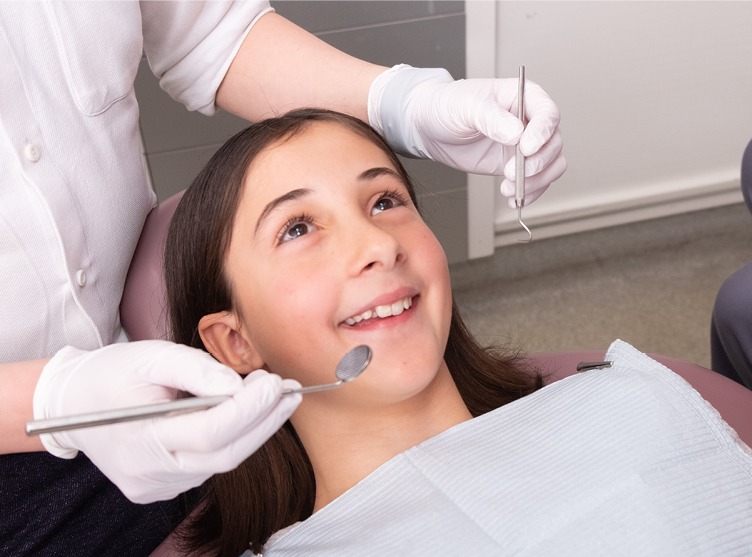Not known Details About Legacy Orthodontics
Not known Details About Legacy Orthodontics
Blog Article
The Only Guide to Legacy Orthodontics
Table of ContentsThe Single Strategy To Use For Legacy OrthodonticsThe Ultimate Guide To Legacy OrthodonticsThe smart Trick of Legacy Orthodontics That Nobody is Talking AboutWhat Does Legacy Orthodontics Mean?Some Known Details About Legacy Orthodontics
At Advanced Orthodontics, we supply individuals with a alternative treatment experience. Furthermore, we provide adjustable therapy timetables, flexible repayment options and an enjoyable, delightful experience. leesburg clear braces. Call ( 480) 357-4900 today to find out more and timetable a consultation.An orthodontist is a dental practitioner educated to detect, stop, and deal with teeth and jaw abnormalities. They fix existing problems and are trained to identify issues that may establish in the future. Orthodontists deal with people of any ages, from youngsters to grownups. People typically link an ideal smile with health.
Malocclusion, or misaligned teeth, can bring about oral issues, consisting of dental caries, gum illness, and tough or agonizing chewing. Not everyone is born with straight teeth. If you have a poor bite or huge rooms between your teeth, you may intend to speak with a dental expert specializing in orthodontic care.
4 Easy Facts About Legacy Orthodontics Shown
( Photo Credit Rating: DigitalVision/Getty Images) Orthodontists utilize dealt with and detachable dental gadgets, like braces, retainers, and bands, to transform the setting of teeth in your mouth. Orthodontic treatment is for dental problems, consisting of: Jagged teethBite problems, like an overbite or an underbiteCrowded teeth or teeth that are as well much apartJaw misalignmentThe goal of orthodontic therapy is to enhance your bite.
A healthy and balanced bite guarantees you can eat, eat, and speak properly. While you might think about orthodontists as generally for children or teens that need dental braces, they can deal with oral problems at any type of age. Orthodontists participate in college, oral college, and orthodontic college. After graduation, they spend 2 or 3 years in an orthodontic residency program.
All orthodontists are dental professionals, but not all dental practitioners are orthodontists. Orthodontic residency programs provide extensive, focused instruction for dental experts. They focus on two areas: Exactly how to effectively and safely move teeth Just how to correctly guide growth in the teeth, jaw, and faceOnce an orthodontist has completed training, they have the alternative to end up being board accredited.
Not known Facts About Legacy Orthodontics
Misalignment, or malocclusion, is one of the most common reason individuals see an orthodontist. It is hereditary and is the result of dimension differences between the top and lower jaw or between the jaw and teeth. Malocclusion results in tooth congestion, an irregular jaw, or uneven bite patterns. Malocclusion is normally treated with: Your orthodontist attaches steel, ceramic, or plastic square bonds to your teeth.
If you have only small malocclusion, you might be able to use clear braces, called aligners, instead of conventional braces (https://pagespeed.web.dev/analysis/https-www-legacyortho-com/fjbdpbv998?form_factor=mobile). Some people need a headgear to help relocate teeth right into line with pressure from visit the site outside the mouth. After dental braces or aligners, you'll need to put on a retainer. A retainer is a customized tool that maintains your teeth in position.
They can develop additional room in the mouth without having to pull teeth. Orthodontists use cords, surgical screws, or plates to sustain your jaw bone.
You may need to see an orthodontist if you have: Crowding or not adequate area for every one of your teethOverbite, when your upper teeth come your bottom teethUnderbite, when your base teeth are too far forwardSpacing or concerns with gapsCrossbite, which is when your top teeth fit behind your base teeth when your mouth is closedOpen bite or an upright void between your front bottom and top teethMisplaced midline, when the center of your bottom and upper teeth do not line up Remedying a dental malocclusion can: Make biting, chewing, and speaking easierImprove the balance of our face and your overall appearanceEase pain from temporomandibular joint conditionsDifferent your teeth and make them less complicated to clean, helping prevent tooth decay or tooth cavities It's often a dental expert who first notices misaligned teeth throughout a routine exam.
Excitement About Legacy Orthodontics

Throughout your first orthodontic examination, you'll likely have: A dental examPhotos taken of your face and smileDental X-raysPanoramic (360 degree) X-rays of your face and headImpressions to produce molds of your teethThese tests will certainly help your orthodontist recognize exactly how to continue with your treatment. orthodontics. An orthodontist is a dental practitioner who's had training to treat your teeth and jaw
An orthodontist is concentrated on your bite, so something like a damaged tooth would certainly be dealt with by a dental practitioner. Orthodontists are focused on your bite, or the method your teeth fit together, and the straightness of your teeth.
Ever before asked yourself exactly how celebs constantly appear to have perfectly lined up teeth? Orthodontists are dental professionals that focus on remedying irregularities in the teeth and jaws.
More About Legacy Orthodontics

While dental braces are the most commonly identified orthodontic treatment, orthodontists have a diverse toolkit at their disposal. The specific technique selected relies on the extent of the case, the individual's age, and individual preferences. These tried-and-true dental braces utilize a system of braces bonded to the teeth and connected by cables.
Clear aligners, like Invisalign, are a preferred option for patients seeking a more discreet treatment option. These removable trays are personalized to gradually change the teeth's position. Headgear may be utilized together with dental braces or aligners to use additional targeted pressures, particularly for fixing jaw inconsistencies. In situations of slim jaws, palatal expanders can be made use of to produce area for correct tooth alignment.
Report this page